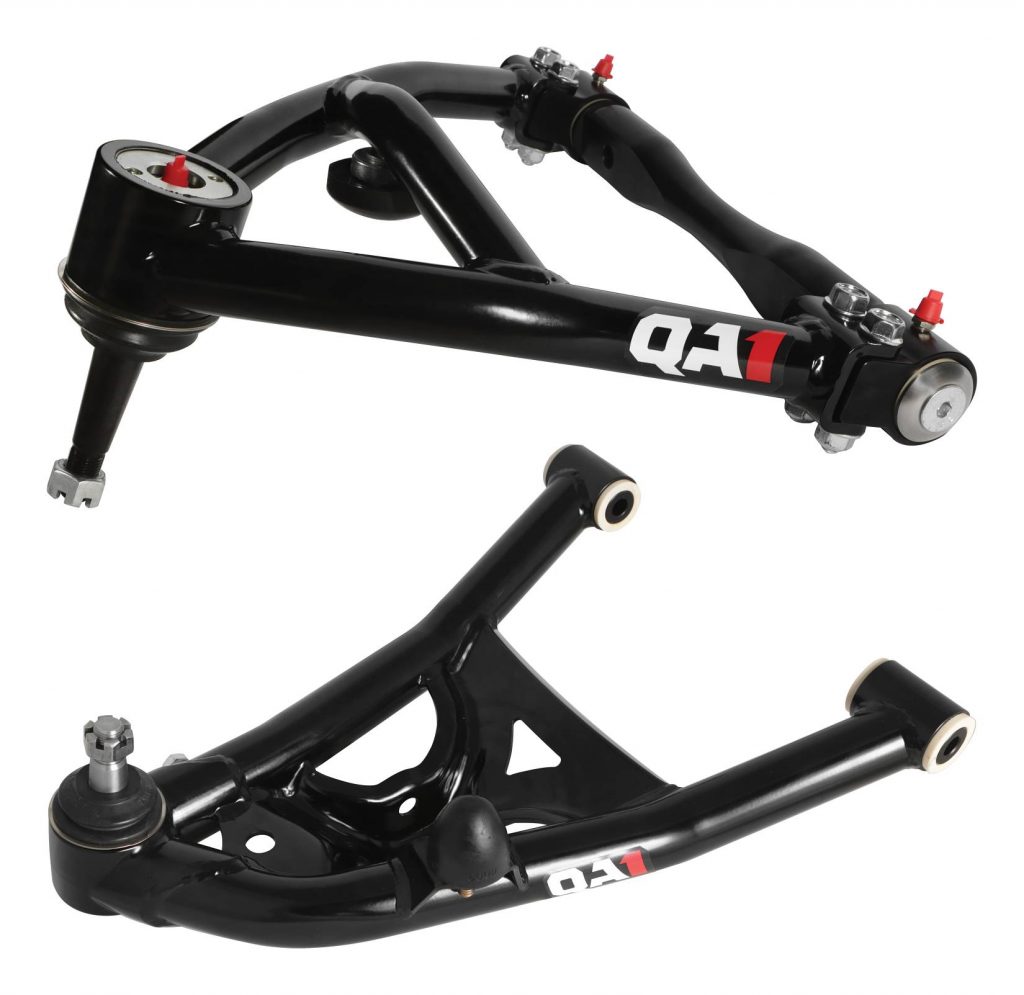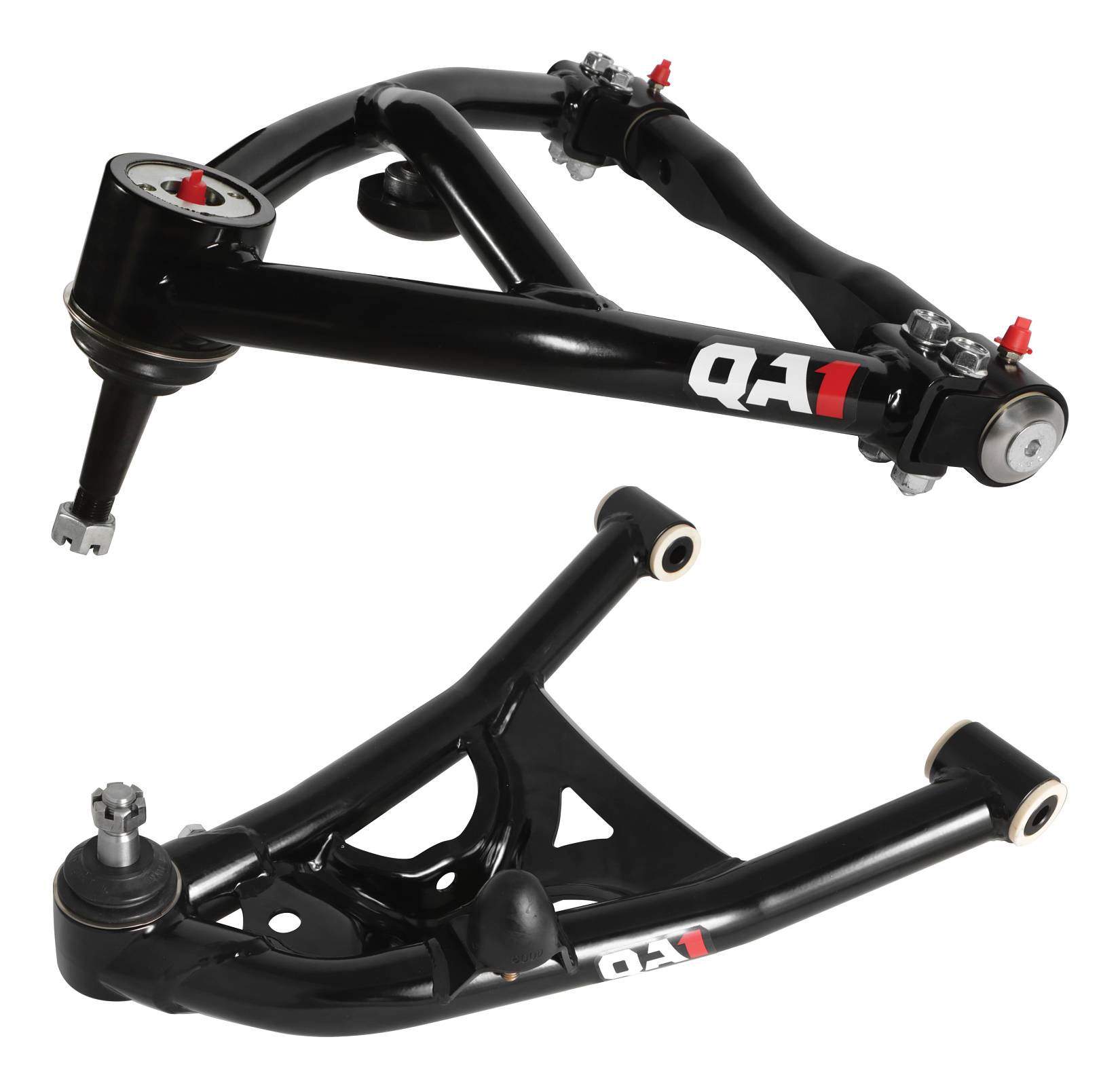Anyone into modifying cars will have heard the words “tubular control arms”, but what exactly do they do? Are they worth the time and effort to install or are they simply unnecessary add-ons that simply exist as a flex? Are there benefits of tubular control arms?
Table of Contents
If you’ve ever thought about upgrading your stock control arms, then this guide is for you! We’re going to look at everything related to tubular control arms: their function, their benefits, and the many different variations that exist. We’ll also try to answer any questions you may have to help you decide if they’re the right upgrade for you!
What Are Control Arms?
Control arms are integral parts of your vehicle’s suspension system. They serve as the direct connection point between a vehicle’s wheels and its frame. Control arms allow the driver to turn the wheels while also providing stability.
Two-wheel drive vehicles come with control arms on the front axle at both wheels while four-wheel-drive vehicles come with control arms on every wheel. Essentially, they connect the steering knuckle to the vehicle frame. The control arm’s ball joint serves as the pivot point of the vehicle's steering system. Altogether, the control arms ensure that the vehicle’s wheels and body move in unison.
Aside from turning, control arms are also responsible for guiding the vehicle’s wheels as they go up and down following the surface being driven on. The hinge joint keeps the tires planted on the ground, regardless of any bumps or potholes. Bushings, which are parts of the control arms, also prevent metal-on-metal contact as the arms move up and down. This reduces vibrations and noise for smoother rides.
Control Arm Designs
Control arms come in different shapes and sizes. The standard designs have changed over the years, so it’s important to at least have an idea of what design your vehicle might have. This will help you search for compatible upgrades easily and understand what kind of maintenance you might need to perform.
A-Shaped And L-Shaped Arms
A-shaped arms, also called wishbone arms, are perhaps the most common design for these components. They’re shaped like a triangle with both a narrow and broad end. The narrower end is where you’ll find the ball joint while the broader end is where you can find the bushings.
L-shaped arms are similar to A-shaped arms except for their shape. Both function to connect a ball joint to the steering knuckle that turns the wheels.
Double wishbone-shaped arms were the standard for a long time. Vehicles that used this system required two arms: upper control arms and lower control arms. This meant more maintenance had to be done on the arms, which is why they were eventually phased out in favor of the MacPherson suspension system. However, some high-end cars still use the double arm system today because it provides better handling and control.
Adjustable Arms
Some vehicles used adjustable control arms for more flexible driving. These improve vertical alignment and ensure proper traction. They are a specific use case, but you may still encounter them on some truck models.
Tubular Control Arm Suspension Upgrades
If you’re at all into cars or racing, then you’ll understand that going fast isn’t all there is to performance driving. Handling is just as (if not more) important than your top speed or acceleration.
Tubular control arms exist as an upgrade to the default stamped steel control arms that come with most vehicles fresh from the factory. Installing them will help improve your car’s handling, suspension, durability, and aesthetic!
While typically overlooked, there’s no overstating the impact of having high-quality tubular arms. Let’s quickly run down the benefits they provide.
- Improved suspension geometry: The two direct benefits of tubular control arms are improvements in caster and camber. Camber refers to the inward and outward tilt of the tires which are important for keeping the vehicle on the road, especially when taking hard turns at high speeds. On the other hand, caster refers to the forward or backward slope of the line connecting the upper and lower pivot points. This helps with your car’s steering balance, front-end cornering stability, and high-speed stability on straightaways.
- New ball joints: Ball joints in your vehicle’s tires receive a lot of stress when you drive your vehicle. They connect the wheel hub to your car’s control arm and allow you to universally pivot your tires. Having high-quality ball joints is essential for maintaining a smooth and safe ride. Taller ball joints, a common sight in upgraded control arms, also help improve caster.
- Weight and durability: Some types of tubular control arms can also help decrease the vehicle’s overall weight while providing extra strength to the suspension system. Modern tubular control arms are lightweight and rigid thanks to their tubular design. They tend to come with polyurethane or Delrin bushings, which are firmer than the standard rubber bushings that come with most stock arms. This durability translates into a smoother ride for the driver, while also providing enough give to deal with potholes and the like.
- Appearance: Lastly, tubular control arms overall just look great. They’re sleek and sporty, which gives everyone an idea of how fast your car can go. It’s a great detail that, when added, can really tie your vehicle’s whole aesthetic together.
Types Of Tubular Control Arms
There are different tubular control arms available, and choosing the right one usually depends on the make and model of your specific vehicle. You’ll also need to know what type of driving you plan to do with the car in question.
Different car bodies also have different requirements when it comes to aftermarket suspension, which is why we’re going to quickly run through some notable car models and their corresponding aftermarket suspension options. Here are some of the different types of aftermarket tubular control arms you may encounter:
- Street performance: Some companies will market their control arms as “street arms”. These are mainly designed for those who want to upgrade their older control arms and aren’t necessarily planning on pushing their vehicles really hard. Stability for cruising is the main focus of these products.
- Pro-touring: As the name suggests, these arms are made with going fast in mind. They typically come with low-friction poly bushings and longer ball joints for improved camber gain. This will help keep your car’s contact patch flat on the ground, especially when turning corners. This is also referred to as an improved camber curve.
- Drag racing: If you’re looking to really push your vehicle, then these control arms should be on top of your list. Tubular control arms made for drag racing are lightweight and also come with low-friction bushings and ball joints. They also typically come with adjustable droop stops to help you adjust your car’s front-end mobility to suit your driving needs.
All of these tubular arms can be used for any type of driving, but the differences in their designs will help you customize the driving experience to suit your needs. For example, if you’re hitting the track every weekend, then you might want to install products specifically made for drag racing to give you more control. But if you just visit the track once or twice a year, then street arms will suit you just fine.
A-Body Tubular Control Arms
The GM A platform, or A-body, was an automobile platform produced by General Motors between 1925 and 1981. Notable cars in this category include some iconic vintage models from Chevrolet and Pontiac, including the Chevrolet Chevelle, Chevrolet El Camino, Pontiac GTO, even older models such as the Chevrolet Superior and Oldsmobile Series 60.
Almost all these models share the A-body, meaning they all accept the same type of control arms. Aftermarket control arms for this group of vehicles mainly improve handling while upgrading the durability of stock arms. This is done by increasing rigidity and decreasing weight since these cars were primarily designed for casual driving on a road.
F-Body Cars Tubular Control Arms
The General Motors F platform, or F-body, was the rear-drive automobile platform used by the company between 1967 and 2002. There have only been two vehicles produced using this platform: the Chevrolet Camaro and the Pontiac Firebird.
These cars were meant to go fast, which is why you’ll usually find them made for pro-touring. Many companies specifically make their products to improve camber for F-body cars. Keep an eye out for longer ball joints as well. Cars with power steering will really benefit from this upgrade.
G-Body Cars Tubular Control Arms
Released in 1969, the General Motors G platform (G-body) is commonly seen in mid-sized rear-wheel-drive cars. Examples of cars originally designated as G-body are the Pontiac Grand Prix, Chevrolet Monte Carlo, and the Buick Regal. GM also introduced a front-wheel-drive A platform for its mid-sized cars in 1982, which was later re-designated as G-body.
Tubular control arms for all these cars come in different variations, and your choice will depend on what you plan to do with your vehicle. Some good brands to look out for are Spohn, QA1, or UMI.

C10 Tubular Control Arms
The iconic C10 is the half-ton two-wheel-drive truck produced by Chevrolet under General Motors in the 1960s. Due to the amount of weight these trucks pull, their control arms also tend to noticeably wear out over time.
The safest way to fix the issues that come with this wear and tear is to simply replace them with newer aftermarket options that provide better durability and geometric improvements. Some well-known brands for C10 Chevrolet models include Hotchkis and Porterbuilt.
Conclusion
Despite looking simple, control arms are an integral part of all road vehicles. They directly connect your wheels to the vehicle’s steering kit and provide stability to its front-end. Without them, it would be impossible to drive at all.
Tubular control arms are a direct upgrade to the stock arms that usually come with most vehicles. They improve geometry, increase stability and durability, provide upgrades to both bushings and ball joints, and even improve appearance. Overall, they’re a great way to easily modify your car’s handling.
Upgrading your control arms can be expensive, which is why it’s also very important to have the proper knowledge. Do your research beforehand, follow our guide, and figure out what type of driving you plan to do before investing in the upgrade. You’ll be on your way to a better driving experience in no time!

